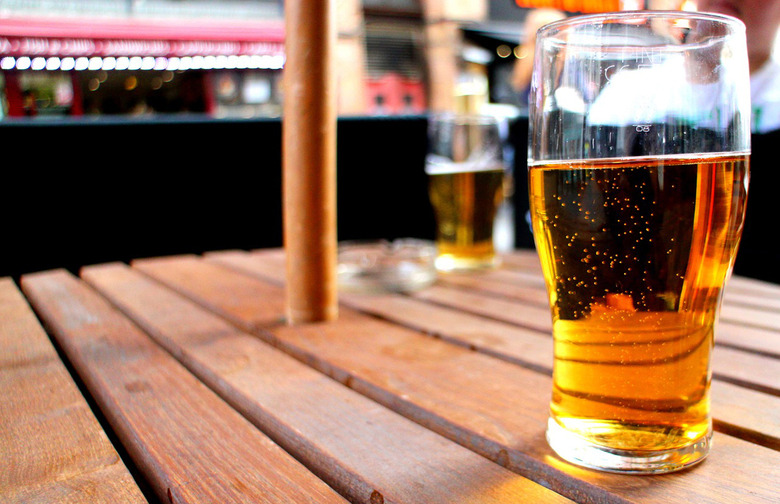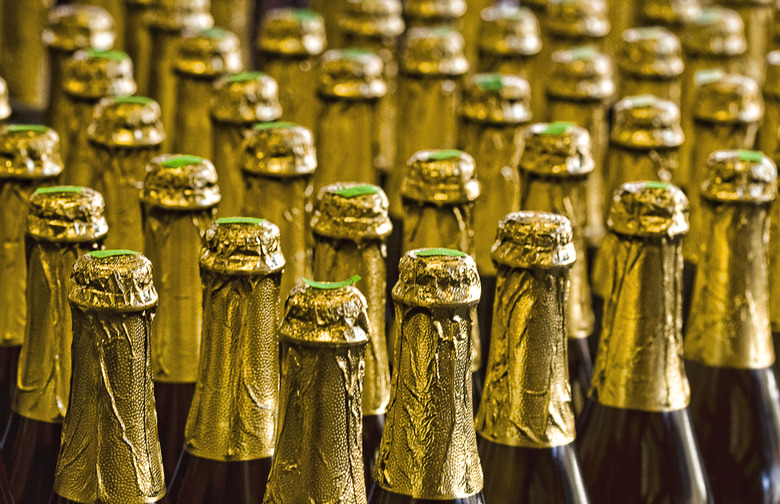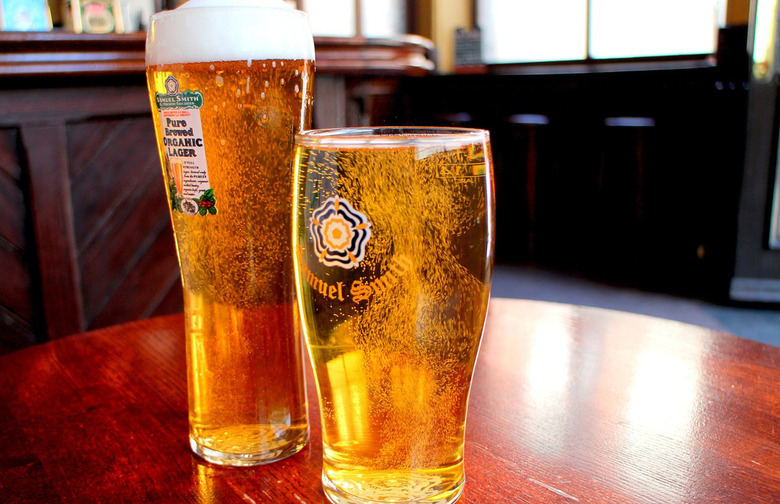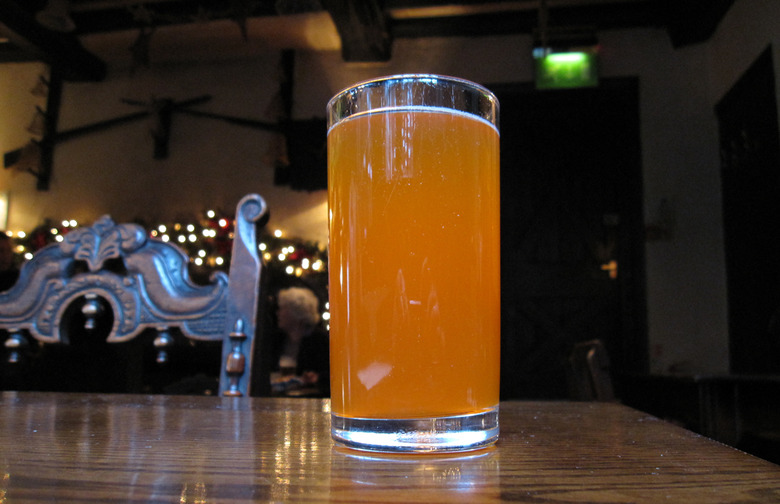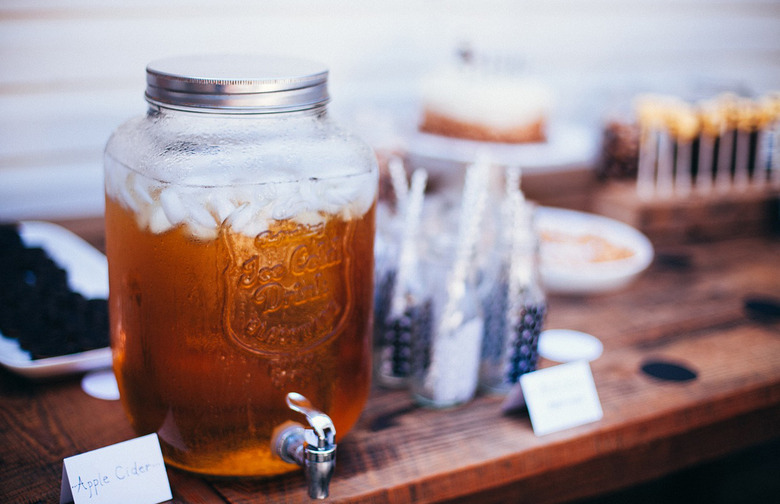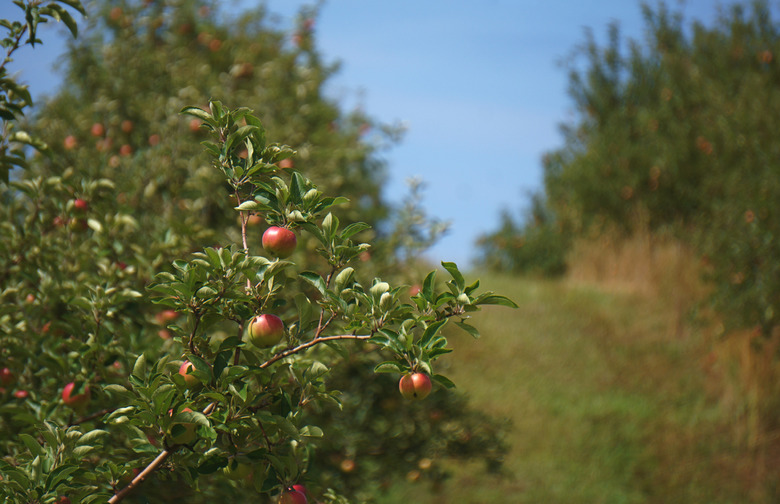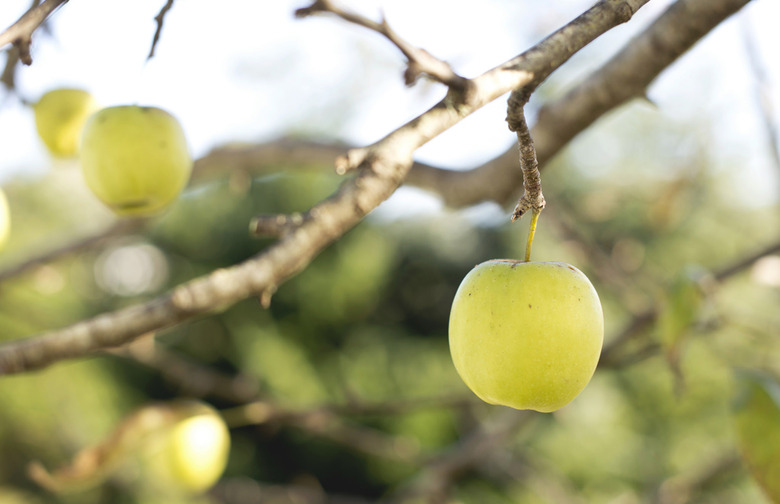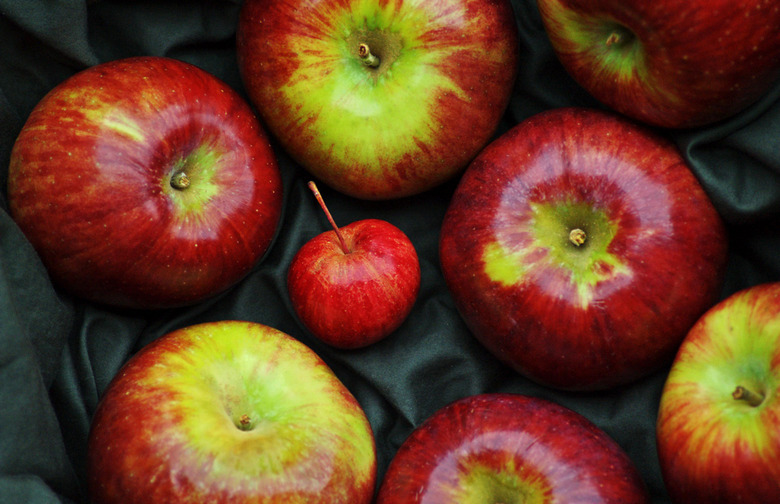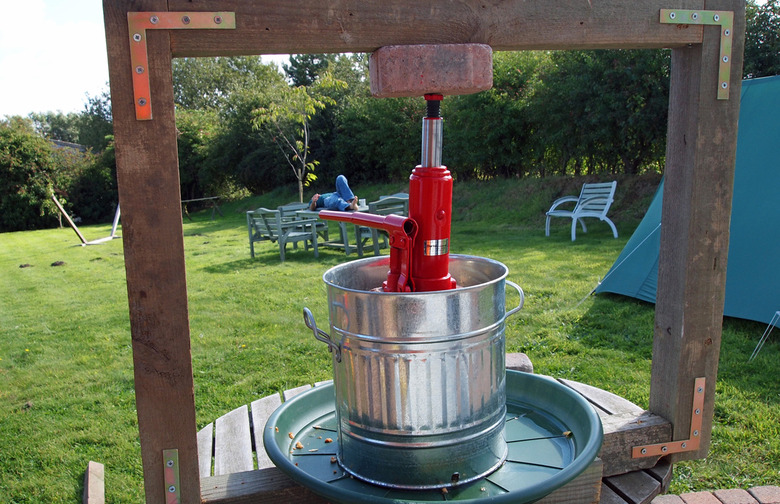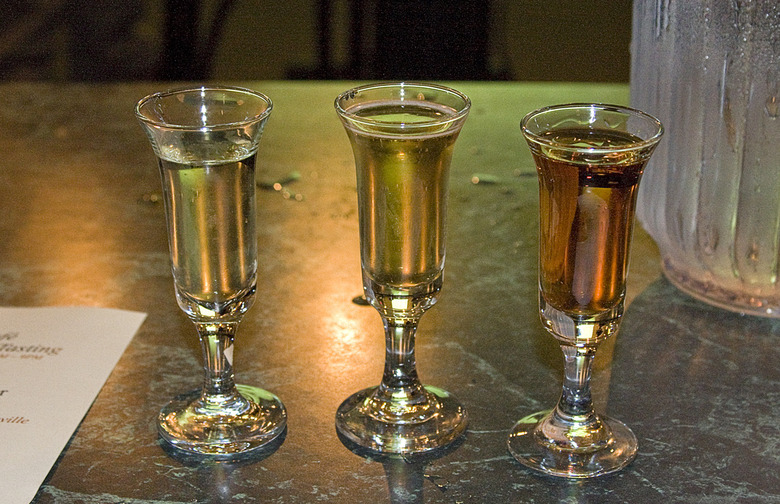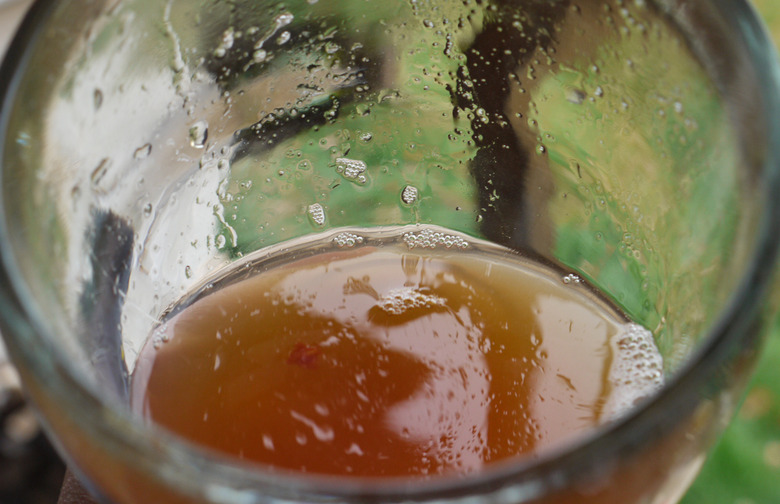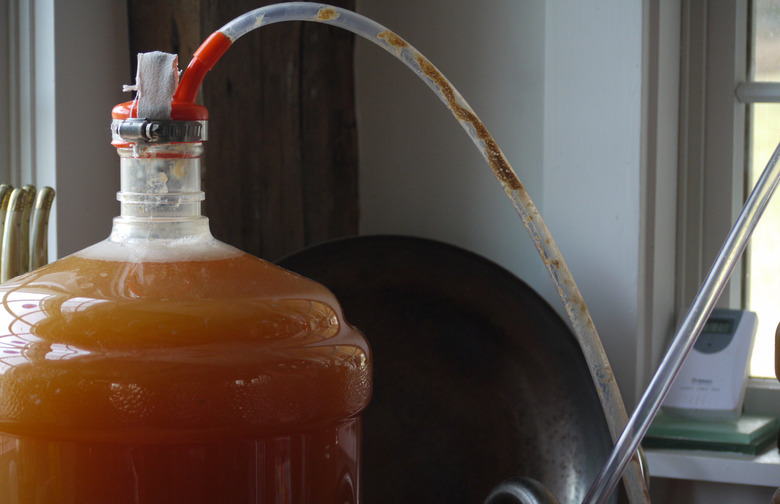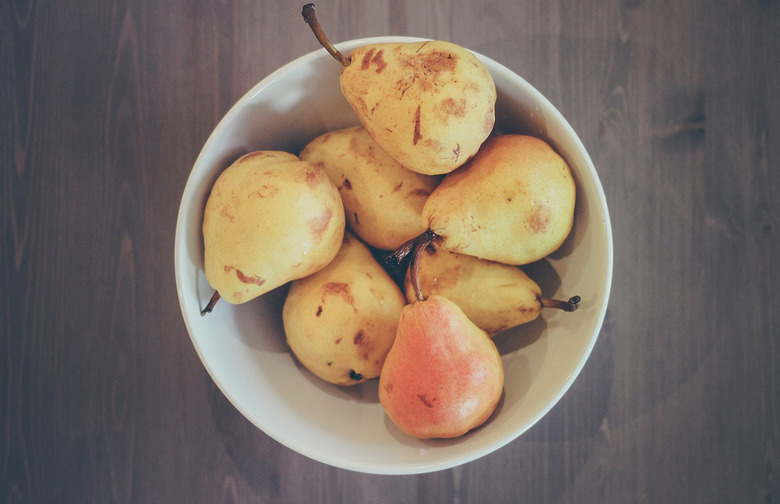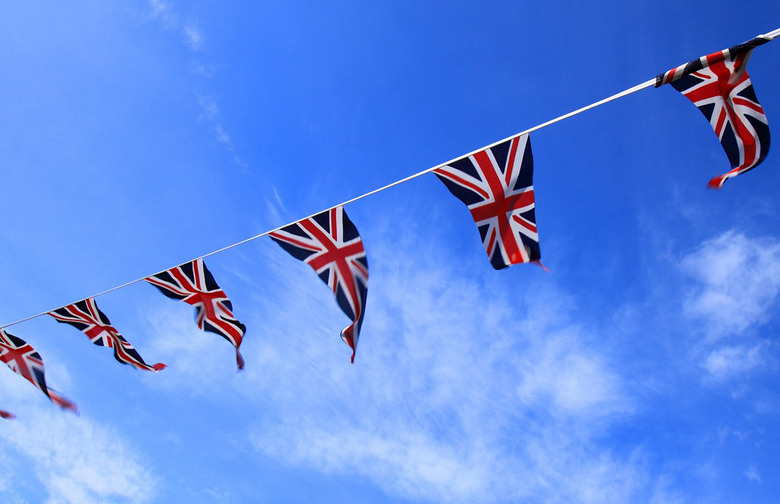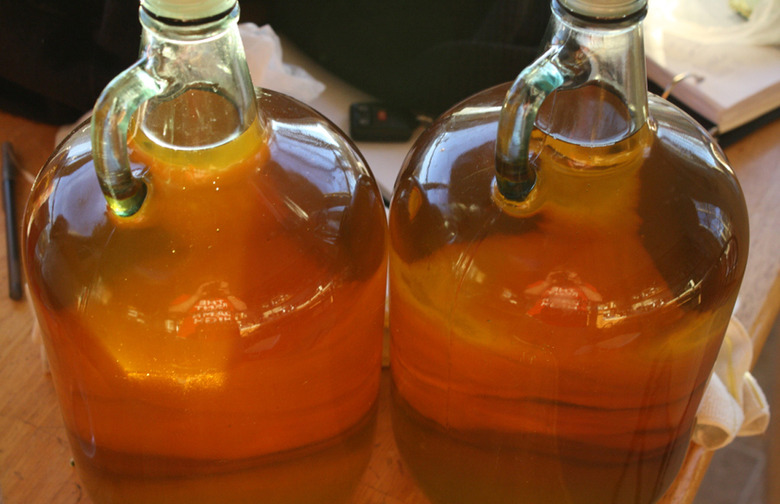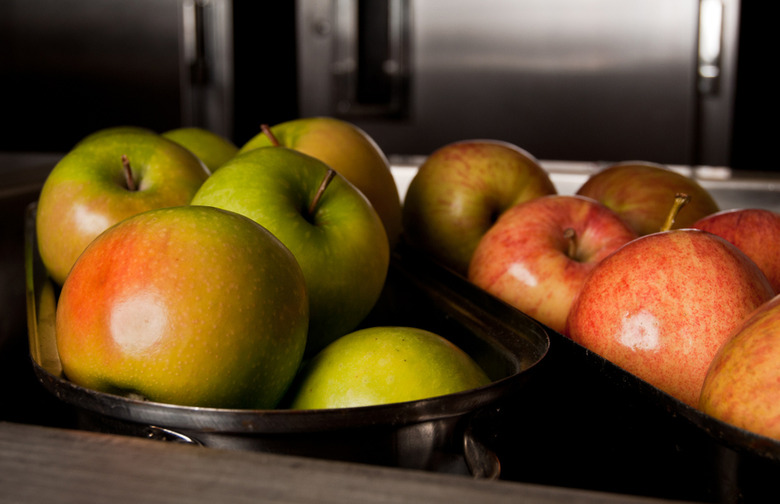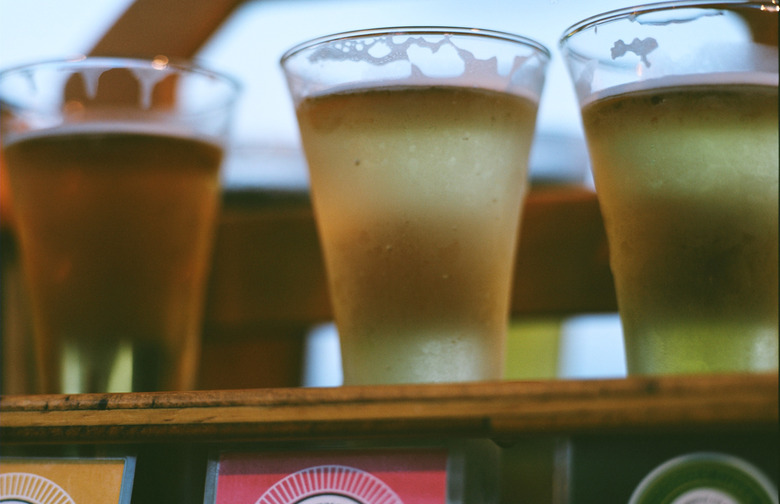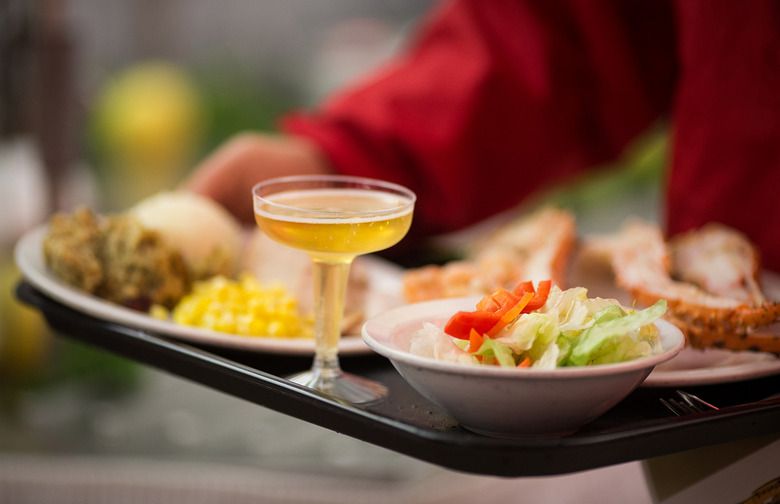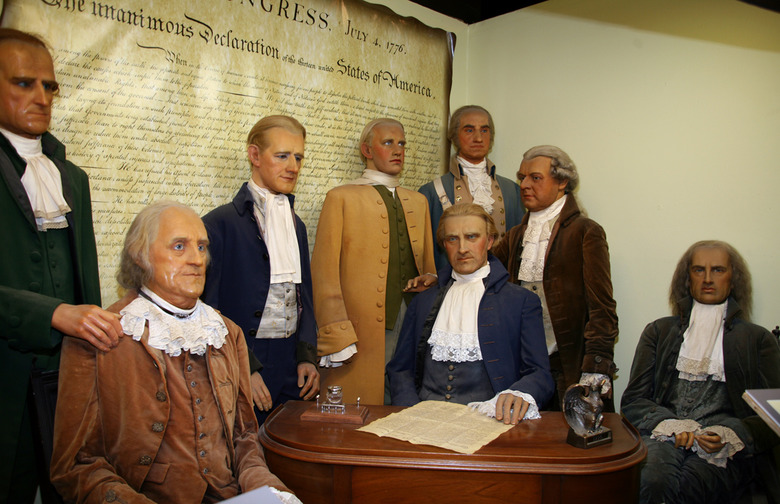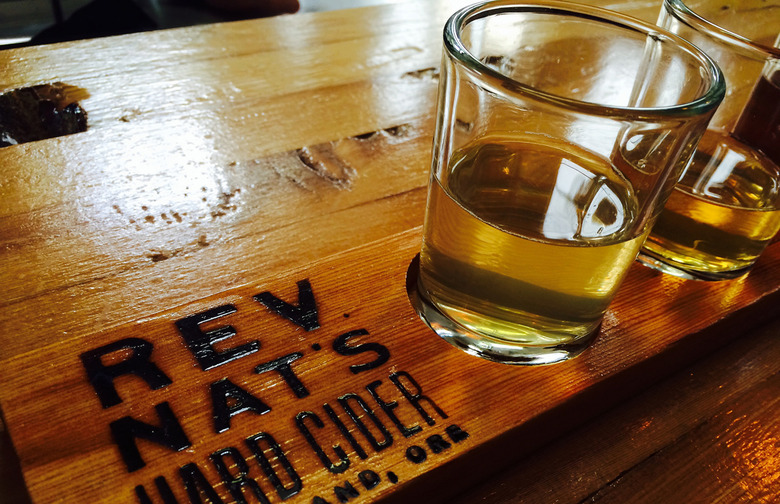Cider 101: The Ultimate Guide To Apple Juice With A Kick
Okay all you bearded, flannel-wearing, beer-loving hipsters; cider is now the cool thing to drink. Again. It's a real comeback kid with a long history. Don't believe us? Here are some random, yet interesting things about cider and its past.
Cider apples were brought to America in 1607 by the Jamestown settlers, and spread around the colonies by the legendary Johnny Appleseed — but more than 2,000 years ago, Strabo, the Greek geographer, was served fermented apple juice in Asturias, in what is now Spain. And fermented — or "hard" — cider is what we're talking about here, not the apple juice often called cider in America.
John Adams, who lived to be 90, drank a tankard every morning before breakfast because he believed apple cider made him healthy and prolonged his life. Thomas Jefferson's "table drink" was a Champagne-like cider made with Hewe's crabapples. And up until the end of the nineteenth century, anyone around America who had a yard or patch of land and an obliging climate grew apples for cider.
Cider’s TKO and Miraculous Comeback
In the twentieth century, the one-two punch that brought cider to its knees was beer's amazing rise in popularity in the latter nineteenth century along with the hammer of prohibition in the first part of the twentieth. Despite this, cider has made an incredible comeback: In the past three years its market share of the beer category's sales has increased more than fivefold. This is why we believe learning absolutely everything about cider is well worth your time.
Read on for what we like to call the ultimate guide to cider.
Cider Can Be A Bubbly Affair
Depending on who's making it, cider can be very bubbly or completely still; the trick is to know how to describe it and ask for it when you are ordering in a restaurant.
Or, It Can Be Flat
Still cider has almost no detectable carbonation or is completely flat; pétillant (that's French for fizzy) cider has a moderate amount of carbonation; and sparkling has high levels of carbonation like a fully bubbly Champagne.
Drink Cider; It’s the Real Thing
From the colonial era in America and up until the nineteenth century, cider was the drink of choice for most Americans for breakfast, lunch, and dinner.
Choosing Cider Over Water
Back then, water in cities was often unsafe to drink, the growing conditions for apples were optimal, and land in the original colonies was either free or cheap and vast enough to grow huge orchards.
Got Apples?
The apple is an ancient fruit that has been around for thousands of years. When Julius Caesar invaded the Britain in 55 B.C., the Romans were astonished to find locals downing a tasty apple drink that had quite a kick. They decided, "When in Britain..." and applied their considerable farming skills to improving orchards and the quality of the cider.
How Do Ya Like Them Apples?
Cider may be wildly popular, but unlike beer, it takes a lot of effort to make. Getting the apple from the tree and eventually into your glass is a complex process. Most people assume cider is made by juicing an apple and then fermenting that juice, but in reality there is more to this tasty ancient drink — beginning with the fruit. In fact, choosing the correct yeast, juice, and brewing process is just as important as choosing the apple.
Lucy in the Sky with Apples
According to the Beer Institute, a beer industry association, domestic cider production rose by 264 percent between 2005 and 2012. Industry revenues have grown exponentially and are today in the hundreds of millions; over the past three years cider's market share has surged more than fivefold.
More on Making Cider
While it's possible to make cider with cooking or eating apples, truly fine cider apples taste nothing like their edible counterparts.
The Types of Apples to Choose From
These apples are classified into four groups that include:
Sweets: cultivars with high sugar levels and low acidity levels.
Sharps: cultivars with high acidity levels.
Bittersweets: cultivars with high tannin levels (which come from the apple skin) and sugar levels.
Bittersharps: cultivars grown for high tannins and high acidity.
Sugar Levels are Important
While it's possible to turn sweet apple juice into a passable cider, the finest quality ciders are made with apples that have higher levels of sugar (sugar is needed for fermentation because the yeasts eat the sugar and turn it into alcohol) but also contain tannins and acidity, which give cider more complex flavors, a fuller mouthfeel, and a crisp palate.
One Lump or Two?
Sweetness in cider is measured by the amount of residual sugar (RS) left behind after fermentation, and despite measureable amounts, everyone detects sugar on his or her palate differently. When making cider, sweetness is measured this way:
Dry = < 0.9 percent RS
Medium (also called off-dry or semi-sweet) = 0.9 percent to four percent RS
Sweet = > four percent RS
Perry Is the Apple of Britain’s Eye
While most people have heard of apple cider, cider made with pears is called perry; the British excel at this delicious version. Thanks again to the Romans, perry has been made for over a thousand years. It was Pliny the Elder who first wrote about this drink made from pears, especially Falernian pears, which he said were good for making tasty wine.
Rule Britannia
Wherever apples are grown, cider is usually produced, but no one drinks as much cider as the English; they drink more cider than the rest of the world combined.
For The Love of Cider
England's thirst for cider was the spark behind cider's growth in America thanks to the arrival of British settlers in Virginia in 1607.
Sometimes Good Cider Is Bittersweet
To make truly fine quality cider, you need a high percentage of sweets with ample amounts of bittersweets and bittersharps, or what industry folks call spitters, because they are so bitter and astringent your mouth will pucker and you won't be able to swallow.
The Best Cider Comes From the Right Apple
Like fine wine, fine cider uses the right apples cultivated in the best terroirs. Experienced cider makers know the best cider apples have judicious amounts of sugar, tannin, and acidity and often produce crisp, aromatic, flavorful ciders worthy of being served with a fine meal, as Thomas Jefferson and George Washington did on their estates.
The Family That Drinks Cider Together Stays Together
In the late eighteenth century, a typical family of six drank about 90 gallons of cider each year — or about 15 gallons per person!
There’s a Style for Everyone
Grown on small farms, hand harvested, and fermented using only the finest fruit, artisanal, or hand-crafted cider can be a revelation if you've only tasted industrially produced cider from frozen juice concentrate. Wine-lovers take to cider naturally because there is a style for everyone from dry, to off-dry, semi-sweet, sweet, still (what's called farmhouse), and sparkling.
All Styles Are Worth Trying
Some ciders are bubbly like Champagne and get their bubbles from fermentation in the bottle, while others are only mildly carbonated from having carbonation pumped into large tanks after fermentation. No matter how it's made, this fun drink is here to stay, we are downing it in quantity, and we agree with Benjamin Franklin who said, "Give me yesterday's bread, this day's flesh, and last year's cider."
Want to Feel Presidential? Drink Cider
Our Founding Fathers weren't immune from cider's charms. Historians tell us Benjamin Franklin regularly extolled cider's virtues in Poor Richard's Almanac and elsewhere; when George Washington ran for the Virginia House of Burgesses his campaign expenses included eight quarts of Cider Royal; and Thomas Jefferson drank cider daily, made from the 18 or so cider apple varieties he grew at Monticello.
Why Do People Love It?
Women love cider because it's crisp, made with apples, and isn't just for men. Manly men can drink it because it's an alternative to hyper-hopped craft beer. Folks concerned about gluten are digging cider because it contains no grains and is safe to drink. And trendy drinkers know it's easy to pair with food so they're guzzling the stuff by the gallon.

